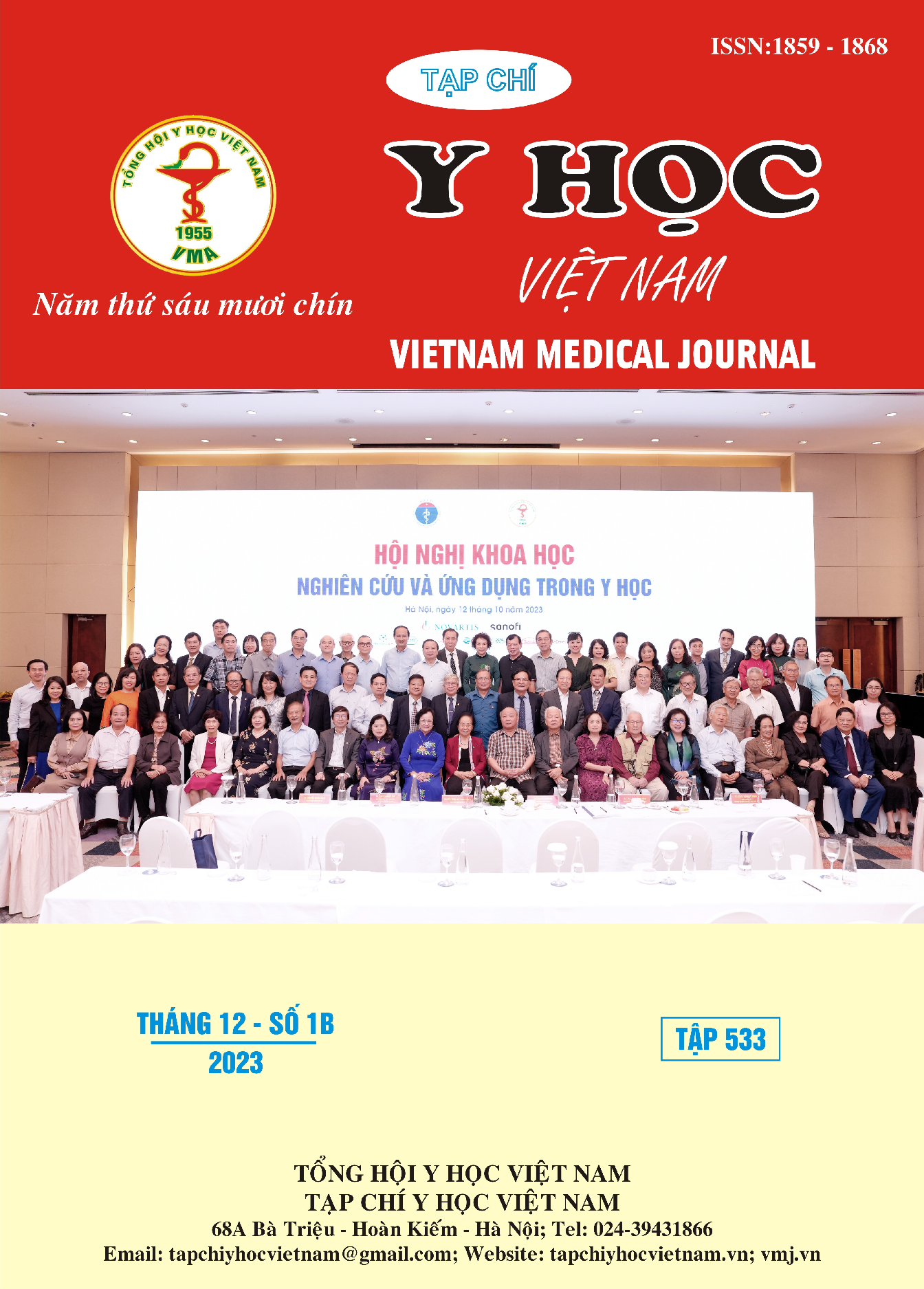THÓI QUEN DINH DƯỠNG VÀ CHĂM SÓC SỨC KHOẺ RĂNG MIỆNG CỦA HỌC SINH TRUNG HỌC PHỔ THÔNG TẠI MIỀN BẮC VIỆT NAM
Nội dung chính của bài viết
Tóm tắt
Mục tiêu: Nghiên cứu nhằm mô tả thực trạng thói quen dinh dưỡng và chăm sóc răng miệng của học sinh Trung học phổ thông (THPT) tại một số trường tại miền Bắc năm 2023. Phương pháp nghiên cứu: Nghiên cứu mô tả cắt ngang tiến hành trên 680 học sinh THPT từ lớp 10 đến lớp 12 tại một số trường THPT trong năm 2023. Kết quả: Trong 680 học sinh tham gia nghiên cứu, có 416 là học sinh nữ (chiếm 61,2%). Tỷ lệ học sinh THPT sử dụng thức ăn nhanh như gà tán, khoai tây chiên hơn 1-2 lần/tuần chiếm tỷ lệ khá cao (hơn 50%). Tỷ lệ sử dụng trứng, sữa và các sản phẩm từ sữa chiếm hơn 90%. Tỷ lệ sử dụng thức ăn béo, đồ chiên xào, nhiều dầu mỡ chiếm tới 75% tổng số học sinh tham gia nghiên cứu. Nghiên cứu cũng chỉ ra 89,4% học sinh có thói quen sử dụng bản chải để làm sạch răng, chỉ có 19,5% học sinh có thói quen sử dụng chỉ nha khoa, 16,5% học sinh sử dụng tăm sau khi ăn. Có 69,8% học sinh có thói quen chảu răng 2 lần 1 ngày, 13,7% học sinh chải răng >2 lần/ngày. Đa số học sinh có thói quen chải răng trước khi ăn sáng (76,9%) và buổi tối trước khi đi ngủ (77,6%). Kết luận: Các học sinh trong nghiên cứu có thói quen thực hành vệ sinh răng miệng tương đối tốt nhưng vẫn cần truyền thông nâng cao nhận thức của học sinh về thói quen sử dụng dụng cụ làm sạch răng, mức độ thường xuyên và thời điểm chải răng.
Chi tiết bài viết
Tài liệu tham khảo
2. AlGhamdi AS, Almarghlani AA, Alyafi RA, Kayal RA, Al-Zahrani MS. Gingival health and oral hygiene practices among high school children in Saudi Arabia. Ann Saudi Med. Mar-Apr 2020;40(2):126-135. doi:10.5144/0256-4947.2020.126
3. M AL. Oral health patterns among schoolchildren in Mafraq Governorate, Jordan. J Sch Nurs. Apr 2012;28(2):124-9. doi:10.1177/1059840511427405
4. Chen L, Hong J, Xiong D, et al. Are parents' education levels associated with either their oral health knowledge or their children's oral health behaviors? A survey of 8446 families in Wuhan. BMC Oral Health. Jul 11 2020;20(1):203. doi:10.1186/s12903-020-01186-4
5. Mahmoud SA, El Moshy S, Rady D, Radwan IA, Abbass MMS, Al Jawaldeh A. The effect of unhealthy dietary habits on the incidence of dental caries and overweight/obesity among Egyptian school children (A cross-sectional study). Front Public Health. 2022;10:953545. doi:10.3389/fpubh.2022.953545
6. Amarasena N, Gnanamanickam ES, Miller J. Effects of interdental cleaning devices in preventing dental caries and periodontal diseases: a scoping review. Aust Dent J. Dec 2019;64(4):327-337. doi:10.1111/adj.12722
7. Hoàng Bảo Duy, Dương Thị Nga, Trần Thanh Bình, Phạm Thu Hương, Phùng Lâm Tới, Ong Thế Duệ, Khúc Thị Hồng Hạnh. So sánh thực hành chăm sóc vệ sinh răng miệng ở học sinh 12-15 tuổi giữa hai tỉnh Hải Phòng và Bình Định. Tạp chí Y học Việt Nam. 2023;525(2):125-129.
8. Attin T, Hornecker E. Tooth brushing and oral health: how frequently and when should tooth brushing be performed? Oral Health Prev Dent. 2005;3(3):135-40.


